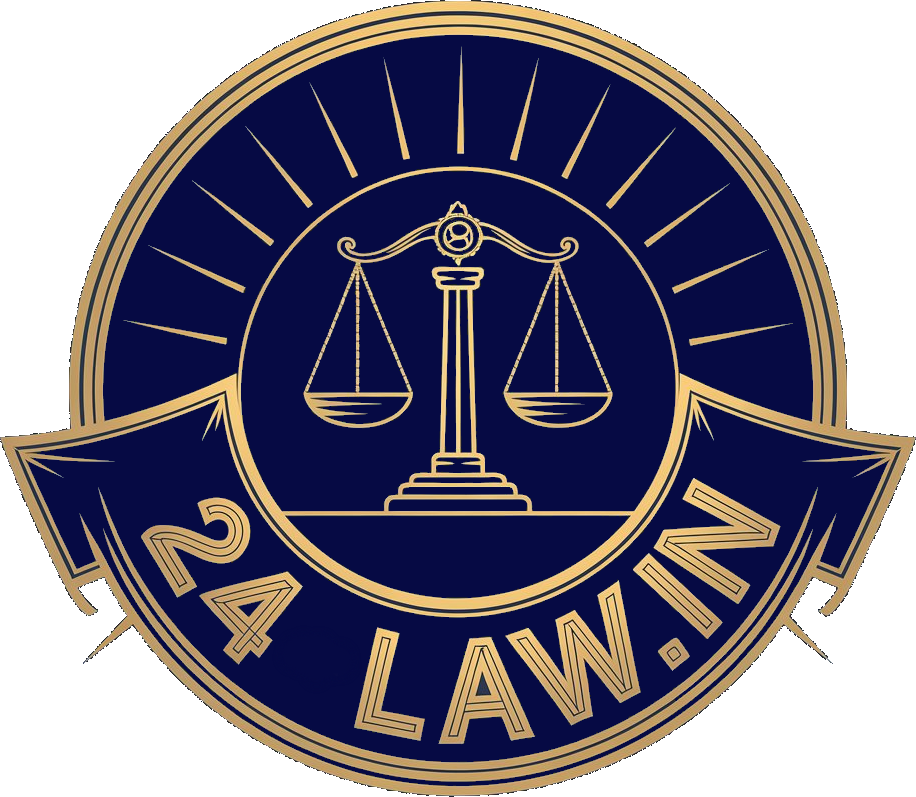Supreme Court Confirms Life Term In Intel Engineer Murder Case | Criminal Appeals Dismissed But Sentence Temporarily Suspended | Accused Allowed To Seek Pardon From Karnataka Governor Under Article 161
- Post By 24law
- July 15, 2025

Kiran Raj
The Supreme Court of India Division Bench of Justice M. M. Sundresh and Justice Aravind Kumar dismissed the criminal appeals filed against a conviction under Section 302 read with Section 120B of the Indian Penal Code and Section 201 IPC. However, the Court granted liberty to the appellants to seek pardon under Article 161 of the Constitution. The Bench directed that the appellants be allowed to file appropriate petitions before the Governor of Karnataka within eight weeks and ordered that their sentence remain suspended until such petitions are considered.
The case stems from an incident that occurred in October 2003 involving four accused persons, three of whom were college students and one a young professional. The main protagonist, referred to as A-4, was a 20-year-old law student at BMS Law College, Bangalore, and the daughter of a practicing advocate. The deceased was a 26-year-old software engineer employed at Intel, and his family resided in the same locality as that of A-4.
In October 2003, the families of A-4 and the deceased agreed to their engagement, which took place on 30 November 2003. However, shortly thereafter, A-4 began expressing her unwillingness to marry the deceased. This resulted in a breakdown in communications between the two families.
On 13 December 2003, the deceased was reported missing by his father. The investigation initially yielded no results until 20 December 2003, when the decomposed body of the deceased was found in a drum near the outskirts of Bangalore. It was revealed through investigation that the murder was premeditated and executed by A-1, A-2, A-3, and A-4.
The deceased was lured by A-4 under the pretense of a meeting, after which he was murdered by A-1, A-2, and A-3 at a rented house procured by A-3. A-2 was specifically tasked with obtaining sedatives and arranging for the disposal of the body, while A-4 played a role in planning and facilitating communication among the accused.
A-4’s role included calling the deceased to the crime scene and communicating with the other accused on multiple occasions. Detailed mobile phone records, chemical examination reports, and witness statements formed the crux of the prosecution’s evidence. The trial court found all four accused guilty and sentenced them to life imprisonment under the applicable provisions.
The conviction was upheld by the Division Bench of the High Court of Karnataka. The present appeal was preferred against the said judgment.
The Supreme Court conducted an examination of the evidence and legal standards applicable to cases resting on circumstantial evidence. The Court began by setting out the parameters under Section 3 of the Indian Evidence Act, noting the foundational duty of the court to discern the truth based on the material presented. It stated: “To prove a fact, the adequate parameter is the degree of probability.”
It elaborated that the definition of “proved” in the Evidence Act rests on whether the court either believes the fact to exist or considers its existence so probable that a prudent man would act upon such a supposition. It recorded: “The court can come to a conclusion on the existence of a fact by merely considering the matters before it, in forming an opinion that it does exist.”
On the appreciation of evidence, the Bench classified evidence into three categories—wholly reliable, wholly unreliable, and neither wholly reliable nor wholly unreliable. It stated: “If evidence, along with matters surrounding it, makes the court believe it is wholly reliable qua an issue, it can decide its existence on a degree of probability.”
Addressing the reliability of eyewitnesses PW-15 and PW-16, the Court was categorical in its rejection of their testimonies. It found inconsistencies in their conduct and significant procedural lapses. With respect to PW-15, the Court noted: “Despite being an ex-serviceman and an eyewitness to the incident, he did not take any step whatsoever to report the same to the police.” It found it improbable that he took the scooter of the deceased home and contacted an Intel security officer instead of informing the police.
Further, it observed: “What is strange is that the FIR itself was lodged only at 10:30 AM on the basis of the complaint given by PW-5, the brother of the deceased, which makes one question as to how PW-31 came to know about the presence of PW-15 at the place of occurrence, even before the registration of the FIR.”
The testimony of PW-16 was also rejected on similar grounds. His statement was recorded more than two months after the occurrence, despite his availability. The Court remarked: “The so-called reasons assigned by him for the delay in giving his statement are also contradictory.” It also found inconsistencies in his identification of the accused and his unclear association with PW-15.
In rejecting the version of both witnesses, the Court concluded: “We have absolute clarity that their presence at the place of occurrence is highly doubtful and therefore, cannot be relied upon.”
Accordingly, the Court noted that the case rests purely on circumstantial evidence and proceeded to apply the five golden principles laid down in Sharad Birdhichand Sarda v. State of Maharashtra, stating: “The circumstances from which the conclusion of guilt is to be drawn must or should be and not merely ‘may be’ fully established.”
Turning to the question of motive, the Court recorded: “When a case is founded on circumstantial evidence, it is imperative to establish the motive of the accused to commit the offence.” It analyzed the testimonies of PW-8, PW-11, and PW-23 in this regard.
With respect to PW-8, the beautician, the Court found her evidence to be “tainted,” as she was acquainted with the family of the deceased. The Court noted: “The prosecution has not made any attempt to prove her presence at the ceremony by producing the said photographs or videos.” Her delayed statement and multiple contradictions rendered her version unreliable.
Regarding PW-11, the Court stated: “She also testifies that it was Sunitha and PW-6 who had visited her house soon after she had seen the incident on television, and asked her to recount what she knew… There is also a huge delay in recording her statement.” This cast doubts on the veracity of her statements.
However, the testimony of PW-23, a close friend of A-4, was found to be credible. The Court observed: “We are inclined to rely much on this evidence, as we find it to be natural.” PW-23 stated that A-4 was dissatisfied with her engagement and lifestyle expectations. The Court found his evidence to be consistent and untainted, stating: “Unlike the aforementioned witnesses, there is nothing on record to show that PW-23 had any prior relationship with the family of the deceased.”
On the question of call detail records (CDR), the Court scrutinized the certification under Section 65B of the Indian Evidence Act. It stated: “The certificates issued by the TSPs are not in compliance with Section 65-B of the IEA.” It further noted discrepancies in tower location data and manual interventions by telecom staff, undermining the evidentiary reliability of the CDRs.
Regarding the recovery of weapons and other material objects, the Court examined whether the discovery conformed to Section 27 of the Indian Evidence Act. It held: “The link required under Section 27 of the IEA is missing as the panch witnesses to the recovery of M.O.11 cannot prove whether the recovery was made pursuant to the disclosure statement of the accused.”
On the recovery of the scooter (M.O.12), the Court found contradictions in its identification and ownership. It stated: “The identification of the scooter by PW-15 and PW-16 is also highly doubtful as they could not state the registration number of the vehicle.”
The Court observed that “if the evidence of PW-15 and PW-16 is disbelieved, then it will be a case of circumstantial evidence. There is no sufficient link to connect all the accused.” It scrutinized the prosecution's chain of events and the legal standard that it must exclude every other hypothesis except guilt.
Evaluating the conduct of A-4, the Court acknowledged her consistent contact with A-1 and her awareness of events. However, in the absence of conclusive evidence and with discredited key witnesses, the Bench refrained from upholding the conviction solely on these bases.
Finally, the Court examined the legal consequences of the established facts and the procedural framework for relief. It acknowledged the irreversible impact of the events on multiple lives, noting: “The voice of a young ambitious girl, muffled by a forced family decision… led to the tragic murder of an innocent young man, while simultaneously destroying the lives of three others.”
Upon a detailed consideration of the factual background, evidentiary inconsistencies, and judicial precedents, the Supreme Court issued its final directions in unequivocal terms. While the appeals challenging the conviction were dismissed, the Court acknowledged the possibility of relief through constitutional mechanisms and directed accordingly.
The Court stated: “In the result, the appeals are dismissed.” However, it immediately proceeded to provide a significant liberty to the appellants by invoking Article 161 of the Constitution of India.
It recorded: “However, it is made clear that the appellants are entitled to avail the relief under Article 161 of the Constitution of India, 1950 and for that purpose, they shall be at liberty to file appropriate petitions before His Excellency the Governor of the State of Karnataka within a period of eight weeks from the date of receipt of this judgment.”
Upholding the practical implications of such a petition, the Court further clarified: “The pendency of such petitions shall be duly considered and till such time, the sentence imposed upon the appellants shall remain suspended.”
The direction was issued in light of the broader principle that “justice must be tempered with mercy and guided by the constitutional vision of reform.”
The Bench expressed that it was within the constitutional domain of the Executive to evaluate whether the circumstances justified a grant of pardon or commutation under Article 161. The Court refrained from making any recommendation or assessment on the merits of such potential petitions.
Reinforcing the constitutional safeguards, the judgment recorded: “The remedy under Article 161 of the Constitution is independent, and this Court refrains from expressing any opinion on the merits of such proposed petitions.”
In conclusion, while affirming the concurrent findings of conviction and sentence by both the Trial Court and the High Court, the Supreme Court directed that:
- The appeals were dismissed.
- The appellants were granted liberty to file petitions under Article 161 before the Governor of Karnataka.
- Such petitions must be filed within eight weeks from the date of receipt of the judgment.
- Until such petitions are disposed of, the sentence of life imprisonment shall remain suspended.
Case Title: Kum. Shubha @ Shubhashankar v. State of Karnataka & Anr. and Connected Matters
Neutral Citation: 2025 INSC 830
Case Number: Criminal Appeal No. 1029 of 2011 & Connected Matters
Coram: Justice M. M. Sundresh, Justice Aravind Kumar


